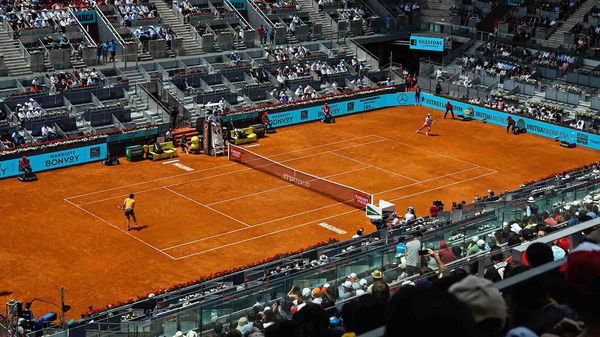
via Imago
Mutua Madrid Open 2020

via Imago
Mutua Madrid Open 2020
Just as the Madrid Open settled into its second week, the stakes soared and tension crackled. Monday’s lineup promised high-octane clashes: round of 32 battles between Casper Ruud and Sebastian Korda, Matteo Arnaldi and Damir Dzumhur on the men’s side, and round of 16 duels featuring Ekaterina Alexandrova vs. Daria Kasatkina, Mirra Andreeva vs. Yuliia Starodubtseva, and Coco Gauff vs. Belinda Bencic for the WTA. But then, everything came to an abrupt halt. What happened?
At 12:34 p.m. local time (CEST), a massive blackout swept across Spain, Portugal, and parts of southern France, plunging millions into darkness. Mobile networks vanished. In Madrid and Barcelona, people held their phones high, hunting for a signal. Eduardo Prieto from Spain’s grid operator REE warned that restoring power could take six to ten hours. Organizers canceled all Monday events “in order to guarantee general safety.” Portuguese energy company REN blamed a “rare” atmospheric phenomenon linked to temperature swings.
Olly Tennis on X reported the news: “ALL MADRID MATCHES CANCELLED FOR THE DAY.” Creating disappointment for fans waiting to see their favorites battle on the red clay. But the WTA singles tournament dodged disaster by a whisker- Coco and Belinda finished their match just in time, wrapping up before the outage struck.
ADVERTISEMENT
Article continues below this ad
Por motivos ajenos a la organización y para garantizar la seguridad, el apagón general que ha afectado a España este lunes 28 de abril, obliga a suspender tanto la sesión de día como de noche en el Mutua Madrid Open.#MMOPEN
—•—
For reasons beyond the control of the… pic.twitter.com/zjPJP2h5i7— #MMOPEN (@MutuaMadridOpen) April 28, 2025
Coco Gauff took to Instagram to share the chaos. She posted a picture of an employee holding candles at the Caja Mágica after her match: “When the power goes out,” tagging the tournament’s main IG page. She also uploaded a video from the pitch-black gym, lit only by a small light, writing, “Apparently the power is out in most of the country and in Portugal I finished my match right now before it happened, thank God.” Her match was the last singles contest to finish before the lights went out.
Meanwhile, on the ATP side, Matteo Arnaldi and Damir Dzumhur were lucky to wrap up their match with Arnaldi taking the win, right before the power went out. Leaving Grigor Dimitrov and Jacob Fearnley’s match up in the air. Some doubles tournaments were also affected in the process. It’s yet to be seen when they will resume.
What’s your perspective on:
Did the blackout save some players from potential defeat, or rob fans of thrilling matches?
Have an interesting take?
How blackouts have shaken major events before
Power outages may not be a common occurrence at major tennis tournaments, but they’ve certainly made their mark in the sport’s history, often causing surprising disruptions. Take, for instance, the 2014 Australian Open, when Rafael Nadal faced Grigor Dimitrov in the quarterfinals. Just as the intensity was reaching its peak, a lighting issue threw a wrench into the match, causing a 20-minute delay. Despite the temporary pause, the match quickly resumed, and Nadal powered through to victory in four sets, leaving fans none the worse for wear.
Fast forward to 2019, and Melbourne’s heatwave turned the Australian Open into a true test of endurance. With temperatures soaring to a scorching 44°C (111°F), the city faced widespread power outages that rattled the tournament. The heat not only caused blackouts but also led to the suspension of matches on outdoor courts. To keep things running, the roof of Rod Laver Arena was swiftly closed, offering players and fans a much-needed break from the blistering heat.
A chaotic scene, but one that only added to the drama of the tournament. Whether from technical failures or extreme weather, these incidents highlight the unpredictable nature of sports events and their challenges.
ADVERTISEMENT
Article continues below this ad
ADVERTISEMENT
Article continues below this ad
ADVERTISEMENT
ADVERTISEMENT
ADVERTISEMENT
ADVERTISEMENT


Did the blackout save some players from potential defeat, or rob fans of thrilling matches?